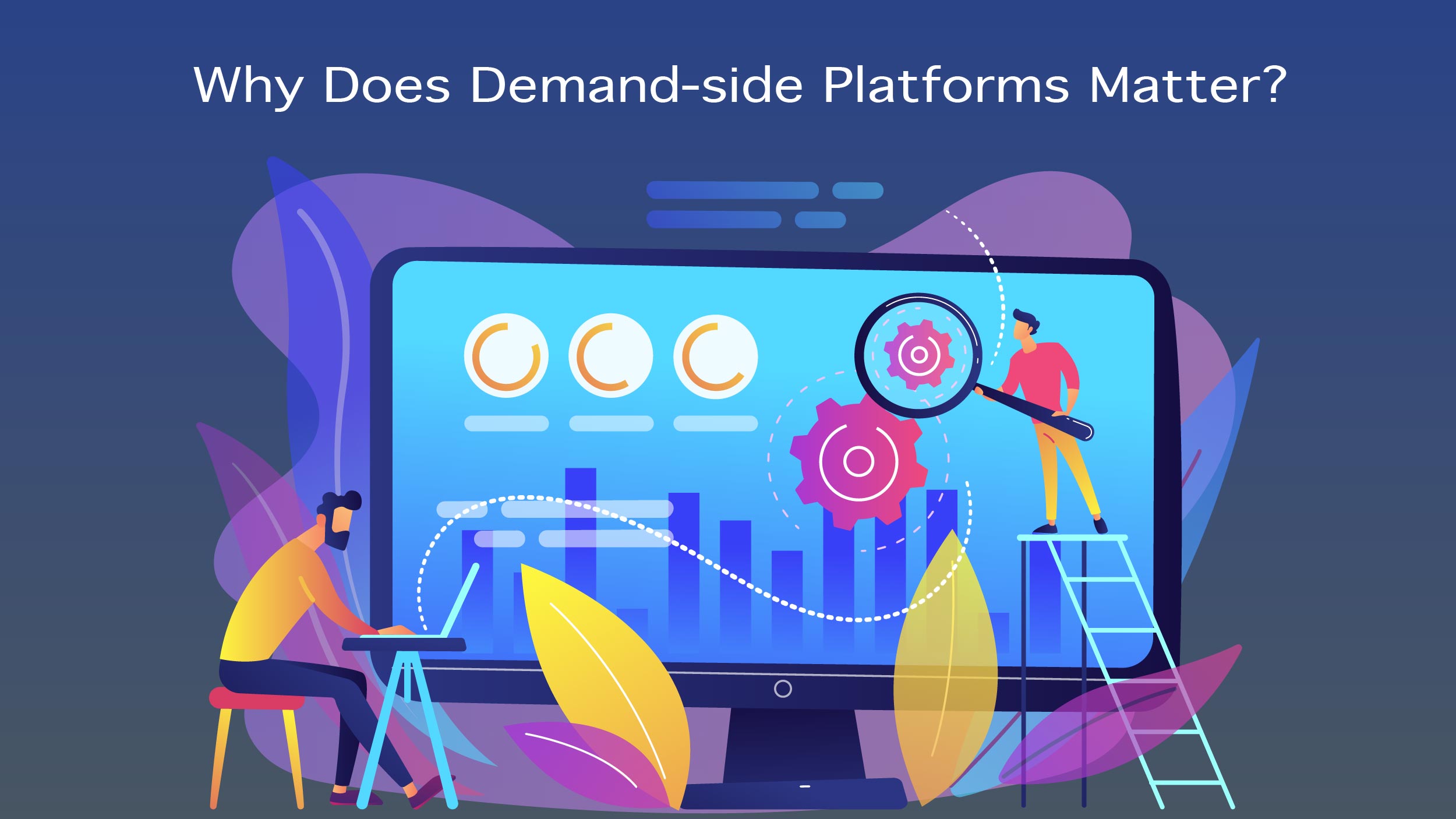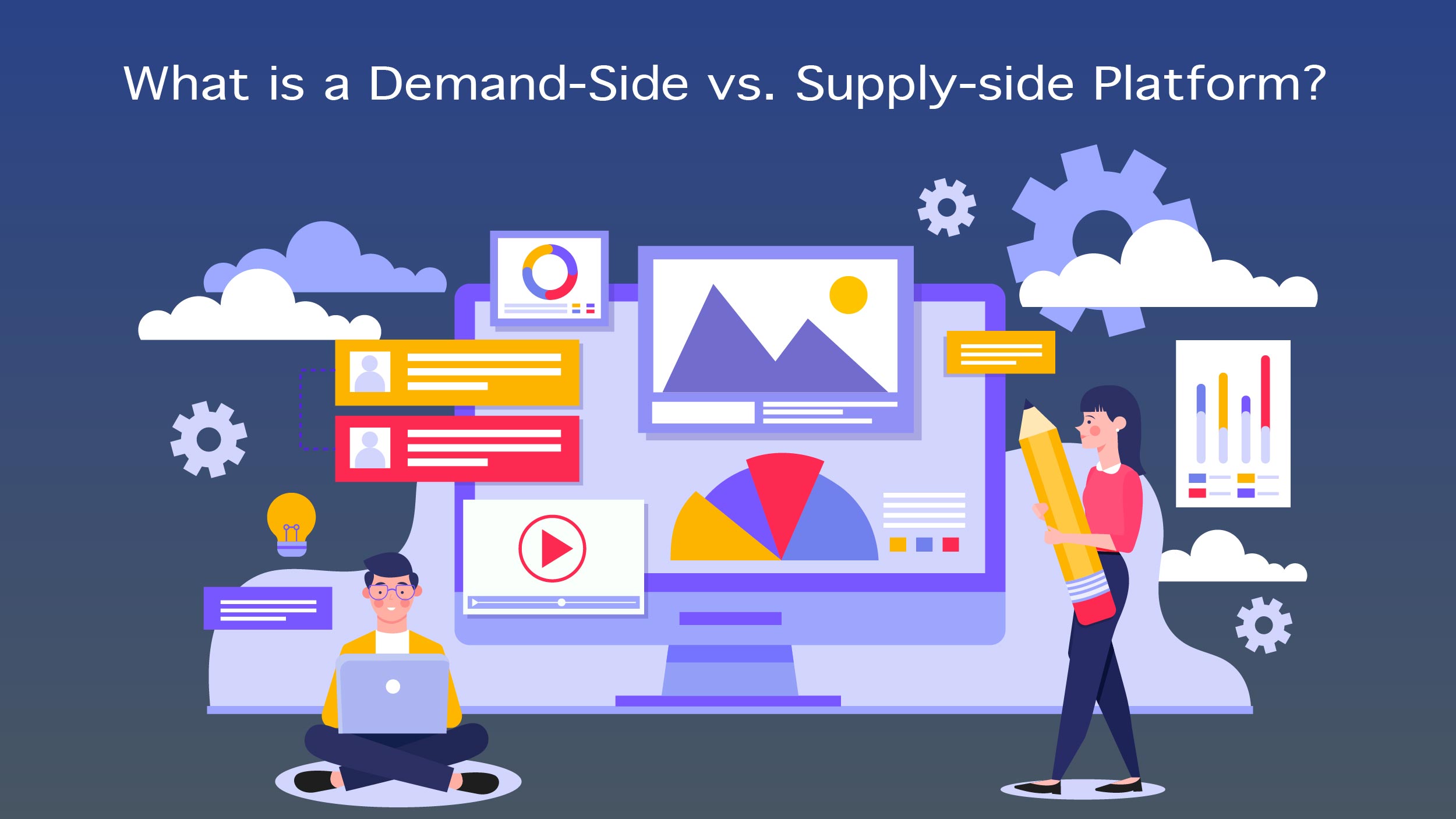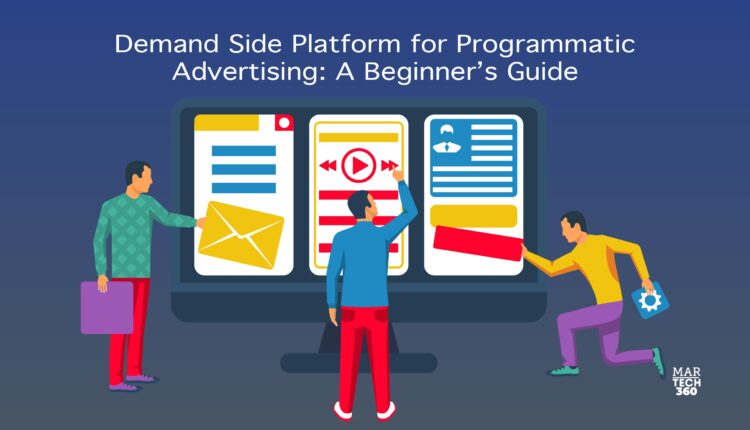The era where marketers relied on physical advertisement options is long gone. People nowadays live in two worlds: online (mostly) and offline. As a marketer, if you want to advertise your product, you must be on its pulse. Luckily, with demand side platforms for programmatic advertising and supply-side platforms, publishers can tap into a wide catalog of advertisers.
With global programmatic ad spending projected to exceed $700 billion by 2026, these platforms are going to stay around for a long period. Let’s delve in and learn more about it.
What is a Demand-Side Platform?
A demand-side platform (DSP) is a tool used in programmatic advertising. It lets advertisers and agencies bid automatically on different types of ads, like display, video, mobile, and search ads, from lots of different publishers.
With a DSP, advertisers can make quick decisions on how much they want to bid for an ad, all in real time. This makes buying ads much faster, cheaper, and easier, helping advertisers reach their target audience more efficiently.
Here’s a simple breakdown of the demand-side platform for programmatic advertising.
Imagine you want to sell your cool new toy, but you don’t know who might want to buy it. A demand-side platform (DSP) is like a super smart helper in this marketplace. You tell the DSP all about your toy and who you think might like it, like kids who love games or toys.
The DSP then goes around the marketplace and looks for people who might be interested in your toy. It checks things like what games they play, what toys they’ve bought before, and where they like to hang out.
Sounds pretty cool, right?
Why Does Demand-side Platforms Matter?
 Demand-side platform for programmatic advertising play a crucial role because they streamline the process of managing ads across various real-time bidding networks. Instead of manually reaching out to numerous publishers to negotiate advertising deals, advertisers can use DSPs to automate this task.
Demand-side platform for programmatic advertising play a crucial role because they streamline the process of managing ads across various real-time bidding networks. Instead of manually reaching out to numerous publishers to negotiate advertising deals, advertisers can use DSPs to automate this task.
By leveraging DSP for programmatic advertising, marketers save valuable time and energy that would otherwise be spent on manual outreach. This automation allows them to set up advertising campaigns swiftly and manage them effortlessly, freeing up resources for other strategic activities.
How Does Demand-side Platform Work?
Demand side platform for programmatic advertising entails the buying and selling of ads in real-time via an automated system. This process involves real-time bidding, where ad placements are swiftly auctioned off within milliseconds.
When embarking on DSP advertising, you begin by strategizing your budget allocation. It’s crucial to determine effective cost-per-click and cost-per-action metrics to guide your ad spending decisions. This enables you to configure your online ads effectively, ensuring that the platform allocates appropriate budgets for each auction.
Top-tier DSP platforms offer the flexibility to incorporate various rich media ad formats, including video, images, and animation. This versatility enhances your advertising capabilities, allowing you to engage your target audience effectively across multiple channels.
What is a Demand-Side vs. Supply-side Platform?
 The supply-side platform (SSP) serves as a technology platform for publishers, linking their ad inventory with ad exchanges. Publishers utilize SSPs to filter ads based on advertiser preferences and other criteria, while also setting rates for ad spaces to determine costs.
The supply-side platform (SSP) serves as a technology platform for publishers, linking their ad inventory with ad exchanges. Publishers utilize SSPs to filter ads based on advertiser preferences and other criteria, while also setting rates for ad spaces to determine costs.
On the other hand, the demand-side platform for programmatic advertising facilitates ad buying for digital inventory purchasers, such as trading desks, agencies, or advertisers directly. DSPs provide a unified interface for managing multiple ad exchanges.
In essence, DSPs and SSPs operate in different segments of the programmatic advertising ecosystem. DSPs assist advertisers in organizing ad-buying efforts, while SSPs automate the sale of advertising space for publishers, constituting the supply-side counterpart to DSPs.
Also Read: What is a Martech Stack and How to Build One?
What are the Components of a Demand-side Platform for Programmatic Advertising?
The main components of a demand-side platform for programmatic advertising are crucial in facilitating the programmatic ad-buying process efficiently. Here’s a breakdown of these components:
- Bidder: The fundamental component of the DSP is the bidder, who is in charge of submitting bids for ad impressions in real-time bidding (RTB) auctions. This is a process where speed is critical since bids must be completed quickly. To reduce latency, DSPs frequently use several data centers across the globe. Using analytics, they project impression bids based on past performance.
- Ad Server: The ad server serves ad elements on the publisher’s website and performs additional functions such as tracking impression and conversion data. It also includes fraud prevention measures to identify false ad inventory. Some DSPs have their own ad servers, while others integrate with external ones.
- Campaign Tracker and Reporting: This component tracks and records data on ad effectiveness, including impressions, clicks, conversions, and ad spends. The data is presented on a reporting dashboard and used for campaign optimization.
- User Profiling: DSPs collect user data when they view ads served by the platform, building profiles based on their behavior and interactions. This enables audience segmentation and targeting for remarketing campaigns and ad optimization.
- Budget Manager: Also known as the banker or cashier, the budget manager allows advertisers to define campaign budget parameters, including maximum spending limits and budget allocation rules.
- Integrations: DSPs integrate with various tools to enhance functionality, including ad exchanges, SSPs (supply-side platforms), data management platforms, analytics platforms, payment gateways, and brand safety solutions. These integrations broaden the DSP’s capabilities and enhance risk management.
- Ad Exchange and SSP Integration: DSPs can access a variety of advertising inventory by integrating with several SSPs and ad exchanges. Through this connectivity, advertisers may reach a large audience across channels from a single source, simplifying the ad-buying process. In order to achieve extensive cross-channel reach, advertisers anticipate that DSPs will interface with several ad exchanges and SSPs.
Best 4 Demand-side Platforms for Programmatic Advertising
Below are the top four demand-side platforms for programmatic advertising.
Facebook Ads Manager
In 2016, Facebook halted the release of ‘Atlas’, a potential rival to Google, citing concerns about user privacy and data. However, Facebook took a different approach to programmatic marketing by offering its own buying platform and biddable ad space through Facebook Ads Manager, functioning as a DSP for its inventory, including Instagram. Advertisers can conveniently create, manage, track, and analyze campaigns via the Facebook Ads Manager app, tapping into its vast user base of nearly 2 billion, making it an attractive platform for programmatic advertisers.
MediaMath
MediaMath, founded in 2007 and majority-owned by employees, is a leading independent programmatic company trusted by two-thirds of the Fortune 500. Offering an integrated platform, MediaMath ensures brand safety for programmatic campaigns and provides full access to campaign data to enhance transparency. Customization options and dedicated experts assist with campaign setup and maintenance, emphasizing MediaMath’s commitment to transparency and customer success.
Amazon (AAP)
The Amazon Advertising Platform (AAP) enables advertisers to reach Amazon shoppers across Amazon sites, the web, and mobile apps. Despite its effectiveness in reaching relevant customers based on real-time shopping behavior, AAP has faced criticism for its lack of transparency. Nonetheless, AAP leverages vast data insights to deliver precise campaigns, positioning itself as a formidable player in the DSP landscape.
DoubleClick by Google
DoubleClick by Google, now integrated into the Google Marketing Platform, is a leading DSP offering an integrated ad-technology platform. DoubleClick enables agencies and advertisers to create, manage, and grow digital marketing campaigns effectively. Despite recent concerns regarding programmatic strategies centered on cookies, DoubleClick continues to innovate, including venturing into television ad space purchasing. As competitors challenge Google’s dominance, DoubleClick remains a formidable force in the DSP realm, continually evolving to maintain its competitive edge.
Final Verdict
Demand-side platform for programmatic advertising have revolutionized the advertising landscape by streamlining a previously cumbersome process marked by negotiations between media buyers and publishers. Through real-time bidding and supply consolidation on a single platform, DSPs have introduced efficiency, transparency, and accountability into ad buying.
This automation not only simplifies the process but also broadens advertisers’ reach across a diverse array of publisher sites. With enhanced targeting capabilities, advertisers can effectively connect with their desired audience, maximizing the impact of their campaigns.


Comments are closed.